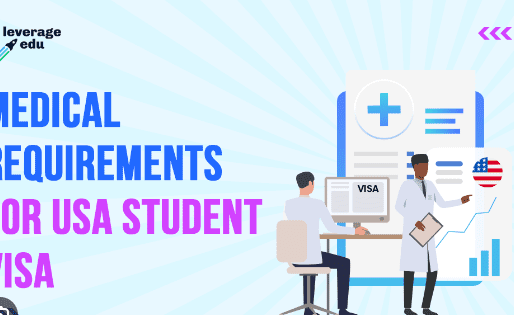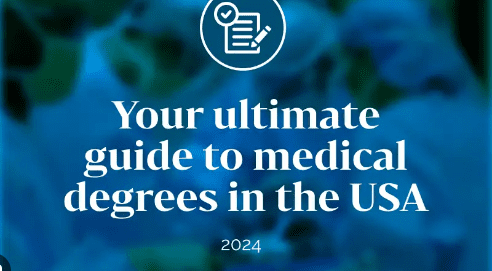Ultimate Guide to Medical Degrees in the USA (2024) Introduction Embarking on a journey to obtain a medical degree in the USA is a significant and rewarding commitment. This guide provides a comprehensive overview of the pathways, requirements, costs, and career prospects for medical degrees in the USA in 2024. Types of Medical Degrees Doctor of Medicine (MD) Overview: The MD is the most common medical degree in the USA, focusing on allopathic medicine. Duration: 4 years of medical school, followed by 3-7 years of residency training. Curriculum: Includes basic sciences (anatomy, biochemistry, pharmacology), clinical rotations, and patient care. Doctor of Osteopathic Medicine (DO) Overview: Similar to the MD, the DO degree
focuses on osteopathic principles, including a holistic approach and osteopathic manipulative treatment. Duration: 4 years of medical school, followed by 3-7 years of residency training. Curriculum: Emphasizes preventive medicine and the musculoskeletal system. Dual Degree Programs (MD/PhD, MD/MPH, MD/MBA) Overview: These programs combine medical education with training in research, public health, or business. Duration: Typically 7-8 years for MD/PhD, 5-6 years for MD/MPH and MD/MBA. Curriculum: Integrates medical studies with research projects, public health courses, or business administration. Admission Requirements Prerequisite Courses Biology with lab General and organic chemistry with lab Physics with lab
Mathematics (calculus or statistics) English MCAT (Medical College Admission Test) Standardized test assessing problem-solving, critical thinking, and knowledge of natural, behavioral, and social sciences. Typically taken a year before applying to medical school. GPA and Extracurriculars Competitive GPA (usually 3.5 or higher). Clinical experience, research, community service, and leadership activities. Letters of Recommendation From professors, physicians, and mentors familiar with the applicant’s academic and personal qualities. Personal Statement and Interviews Personal statement detailing motivation for a medical career. Multiple Mini Interviews (MMIs) or traditional interviews. Medical School Application Process Primary
Application Submitted through the American Medical College Application Service (AMCAS) for MD programs or the American Association of Colleges of Osteopathic Medicine Application Service (AACOMAS) for DO programs. Includes biographical information, coursework, work and activities, MCAT scores, and personal statement. Secondary Applications Specific to each medical school, including additional essays and application fees. Interviews Invitations to interview at medical schools are based on the strength of the primary and secondary applications. Cost of Medical Education Tuition and Fees Varies widely by institution; public medical schools: $30,000-$50,000 per year, private medical schools: $50,000-$70,000 per year. Living Expenses Additional costs for housing, food, transportation, and personal expenses. Financial Aid
Scholarships, grants, and loans are available through federal, state, institutional, and private sources. Residency Training Match Process The National Resident Matching Program (NRMP) matches medical school graduates to residency programs based on preferences. Residency Duration Varies by specialty; most range from 3 to 7 years. Fellowship Training Optional additional training in a subspecialty, typically 1-3 years. Licensing and Certification USMLE (United States Medical Licensing Examination) Step 1: Basic science knowledge. Step 2 CK (Clinical Knowledge) and CS (Clinical Skills, if applicable). Step 3: Clinical management and patient care. COMLEX (Comprehensive Osteopathic Medical Licensing Examination) Similar structure to USMLE but tailored for DO graduates. Career Prospects Employment Opportunities Hospitals, private
practices, academic medicine, research, public health, and administration. Salary Expectations Varies by specialty; primary care physicians earn $200,000-$300,000 annually, while specialists can earn $300,000-$600,000 or more. Job Outlook Positive growth expected due to aging population and increasing demand for healthcare services. Conclusion Pursuing a medical degree in the USA is a challenging but fulfilling path that offers numerous opportunities for specialization and career growth. By understanding the requirements, application process, and career prospects, aspiring physicians can navigate their way to a successful medical career.

